Super Smash Bros. for Nintendo 3DS (Nintendo 3DS) Review
By SirLink  04.10.2014
04.10.2014

Although the Super Smash Bros. series is 15 years old, so far it has only had three instalments, being the original Super Smash Bros. on the Nintendo 64, Super Smash Bros. Melee on the Nintendo GameCube and Super Smash Bros. Brawl on the Nintendo Wii. The fourth game in the franchise has two versions, appropriately titled Super Smash Bros. for Wii U and Super Smash Bros. for Nintendo 3DS. For a series that was previously exclusive to home consoles, there were many questions about its handheld debut, such as controls or the size of the screen. Fortunately, the final product smashes these concerns and is an entry worthy of the Super Smash Bros. name.
Many fans had doubts that Super Smash Bros. could function on a handheld, but just a few hours with it prove that it really does work. A 3DS is certainly no GameCube controller or even a Wii U Pro Controller, but it's still a perfectly serviceable control system that simply requires some time to get used to it. It's easier than expected to follow the frantic action on a 3DS XL, which is partly thanks to the outlines on the characters. Although they can be toned down a bit or turned off completely, it's highly recommended to keep the default option. Those who may be experiencing problems trying to follow their character can tap the fighter's icon on the touchscreen to highlight them. This can be done for an opponent, too, making it a perfect tool to take revenge on someone.
When it comes to performance, the title certainly doesn't disappoint. This isn't a watered down Super Smash Bros. experience by any means, as it runs smoothly and offers the same fast-paced action, where the goal is to knock opponents off the stage. It also features a vast selection of different items - which can be disabled entirely or on an individual basis - that consist of both old and new ones. The experience changes a lot depending on whether they're enabled or not, but both ways to play are a lot of fun. Playing with items requires players to constantly adjust their strategy, which keeps every match varied and exciting. On the other hand, it's also very satisfying to fight without them, where the game becomes more about out predicting opponents and knowing what moves each fighter is capable of.
Although the roster is shared between both versions, the stages are exclusive. In the case of this 3DS version, they're mostly based on handheld games with some from older instalments thrown in. One very welcome addition is the Omega forms of all stages. They are similar to the classic Final Destination stage and keep the aesthetics and music while getting rid of any stage hazards and platforms. While they were likely introduced with competitive play in mind, they're still great options to have.
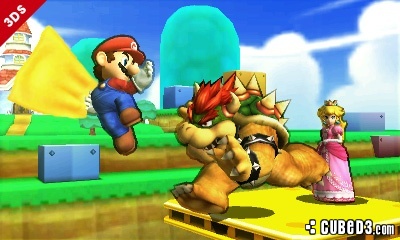
The roster is the biggest one yet, featuring over 40 playable characters, a third of which are newcomers. It's not just the biggest roster yet, though; it's also the best and most varied when compared to previous instalments. Many of the newcomers offer completely new ways to play and stand out from the rest. The boxer Little Mac has a special gauge that builds up over time for a KO punch, and is a beast on the ground but nearly helpless in the air. Rosalina comes with a summoned Luma that enables her to attack from a long distance without fearing a counter-attack. Shulk can switch between five modes on the fly that change his offensive and defensive traits. These are just a few examples of the variety that this roster offers.
It's not just the newcomers that impress, though. Many of the veterans have received either small or big changes that make them more fun to use, so it's not that uncommon to discover favourites that were barely used in previous titles. Sheik and Zero Suit Samus - which used to be transformations of Zelda and Samus, respectively - are two of the best examples of this. Both of them are now their own characters with reworked move sets and feel much better to play as. Even little changes impacted some characters a lot. Link's moves are almost identical to what they were before, but his dash attack now resembles the jump attack from the 3D The Legend of Zelda games and makes him a far more competent fighter. Lucario is another character that's much better simply because its special aura mechanic - that increases Lucario's power with each received hit - was made a lot more useful. Of course, it also helps that it received a far more dangerous Final Smash. Some other fighters also come with new Final Smashes this time around, while others have the same ones from Super Smash Bros. Brawl.
Miis have been a big part of Nintendo's recent history, so it was only a matter of time before their arrival in Super Smash Bros. They can be created by using any Mii that's stored on the system and come in three distinct classes: Brawler, Swordfighter and Gunner. There are three variants of the four special moves for each class and a plethora of costumes and headgear to personalise one's Mii fighter. On top of all that, up to three badges can be equipped that change power, defence and speed, or provide other special effects. It's surprisingly fleshed out for what could have ended up as a simple cameo appearance, and the three types of Mii fighters are very fun to play as, too. Customisation isn't limited to just Miis, either. Each character has special move variants and badge slots that allows players to shape their favourites the way they want.
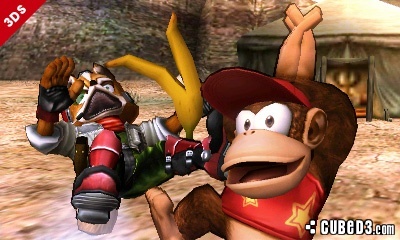
The package contains a number of different modes in addition to regular Smash matches. Classic mode is made up of several fights with a boss at the end, but this time it's possible to choose between two or three paths when moving on to the next challenge. Picking the harder options yields a higher score and more gold, but the real highlight here is the Intensity meter that was introduced in the brilliant Kid Icarus: Uprising. It allows players to adjust the difficulty on a scale of 0-9 by betting gold, with better rewards making harder playthroughs worthwhile. Speaking of which, the AI of enemies is a big improvement over previous titles and plays much more like skilled human opponents would.
All-Star mode also makes a return and is set up in a slightly educational manner this time around, as Nintendo's characters are put into groups based on the time period they were introduced in. It's a cool little detail for long-time fans that also provides a quick lesson for those unfamiliar with Nintendo's history, all without detracting from the actual game. The Home-Run Contest is also included, where the goal is to deal as much damage as possible to a sandbag, before launching it with a baseball bat. Target Blast works similarly, except the sandbag is replaced by a bomb that has to be launched into targets to set off a chain reaction and score points.
The big new mode - exclusive to the Nintendo 3DS version - is called Smash Run. The objective is to gather stat boosts by traversing a big map and defeating various enemies taken from the featured franchises for five minutes, before a final showdown, which can be a regular battle, or a challenge involving climbing or running, among other things. It's a good change of pace that also serves as a great way to unlock more collectibles, such as trophies, custom moves, outfits for the Mii fighters and powers that can only be used in Smash Run. While this mode can be played with up to three other players via local wireless, it sadly doesn't support online play.
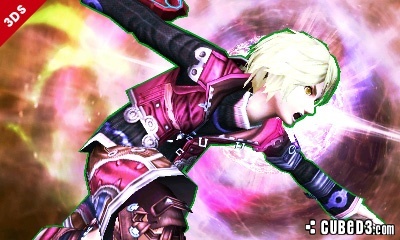
Super Smash Bros. is known for its high amount of unlockable collectibles and this instalment doesn't disappoint in that regard. It contains hundreds of trophies - more than its predecessor Super Smash Bros. Brawl - hundreds of custom special moves and a lot of gear to customise the appearance of Mii fighters. These things can be obtained in many ways, but they're most commonly obtained while playing Classic mode, Smash Run or Trophy Rush, the latter of which is a mini-game where falling boxes need to be destroyed in order to earn trophies and custom parts. On top of all these collectibles, there are dozens of challenges that can be completed to see amusing screenshots and obtain extras such as trophies or soundtracks. There are also some stages and characters that have to be unlocked, but it doesn't take too long to obtain all of them.
While there is a lot to do and unlock, multiplayer is where the game - just like previous iterations - really shines. The online experience is a far better one than Super Smash Bros. Brawl's, but it should be noted that performance is very dependent on the Internet connection of all participants. For example, random matches can range from perfectly fine to completely unplayable. Of course, the game also just came out worldwide at the time of writing, so a big influx of players could also play a part in the variable online performance. One big improvement is that there is almost no input lag, something that was common in the previous title even when everything ran well.
There are two modes for playing with anyone from around the world called For Fun and For Glory. The former features most stages and items and only records wins, while the latter allows for 1vs1 battles, has no items, records both wins and losses, and only features the Omega versions of all levels. Perhaps the best and most reliable way to play online is in friend lobbies, where the rules and item selection can be changed. This is also the only online mode to allow character customisation and Mii fighters, likely to prevent balancing problems. It's also possible to watch random online matches and predict the winner by betting gold.

Cubed3 Rating
Exceptional - Gold Award
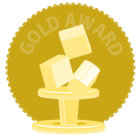
The handheld debut of Super Smash Bros. is a successful one that stands proud alongside its predecessors on home consoles and is a must-have for Nintendo 3DS owners, with combat that feels more refined than Super Smash Bros. Brawl and can be enjoyed by casual and dedicated players alike. The roster is also the biggest and best one yet, and the production values are outstanding. While it's still unclear what the upcoming Wii U version will have and how the two versions will interact with each other, those who really value much better graphics and more control options - such as the Nintendo GameCube controller that can be used with a special adapter - might want to wait for it instead. Anyone else, though, definitely shouldn't hesitate to get a copy of this game to settle it in Smash.
Comments
Comments are currently disabled

 Sign In
Sign In Game Details
Game Details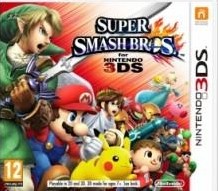
 Out now
Out now  Out now
Out now  Out now
Out now  Out now Also on
Out now Also on 
 Subscribe to this topic
Subscribe to this topic Features
Features





 Top
Top

